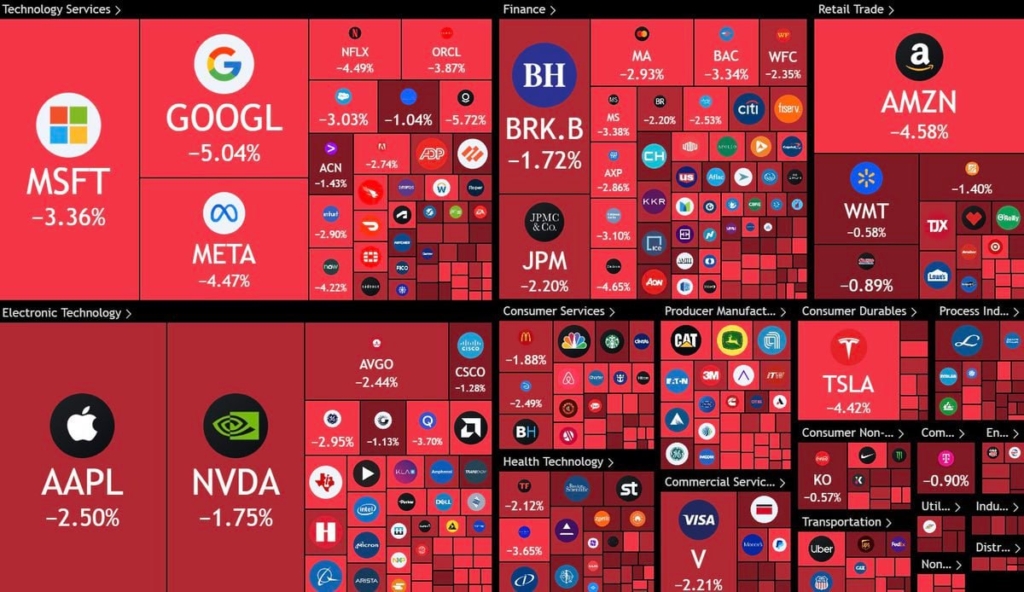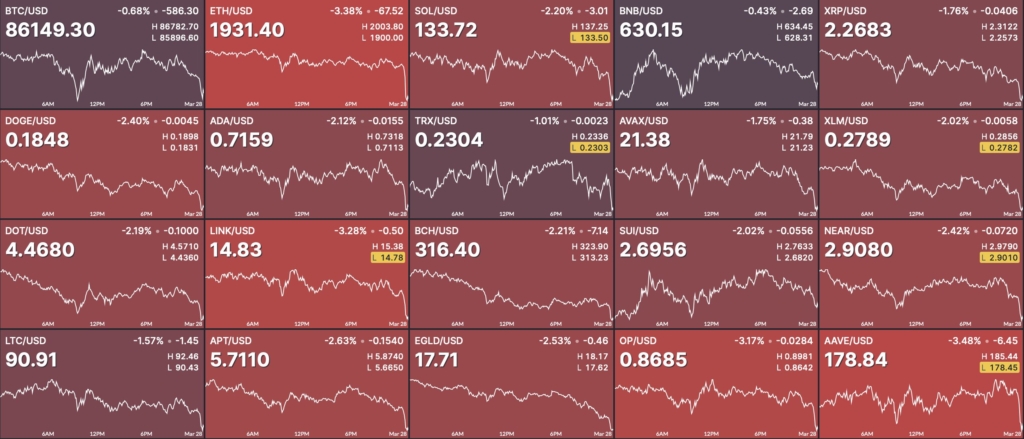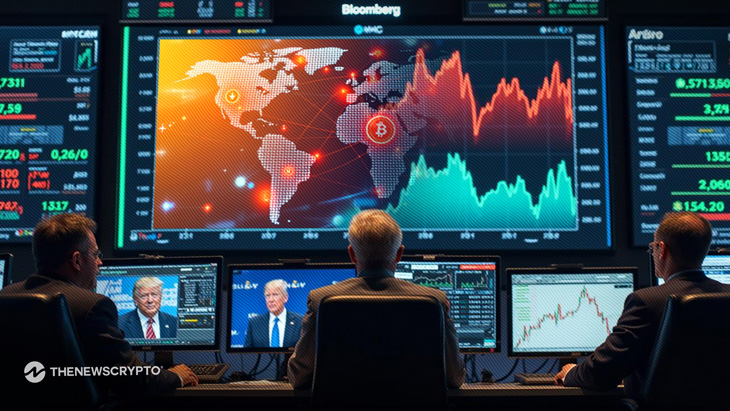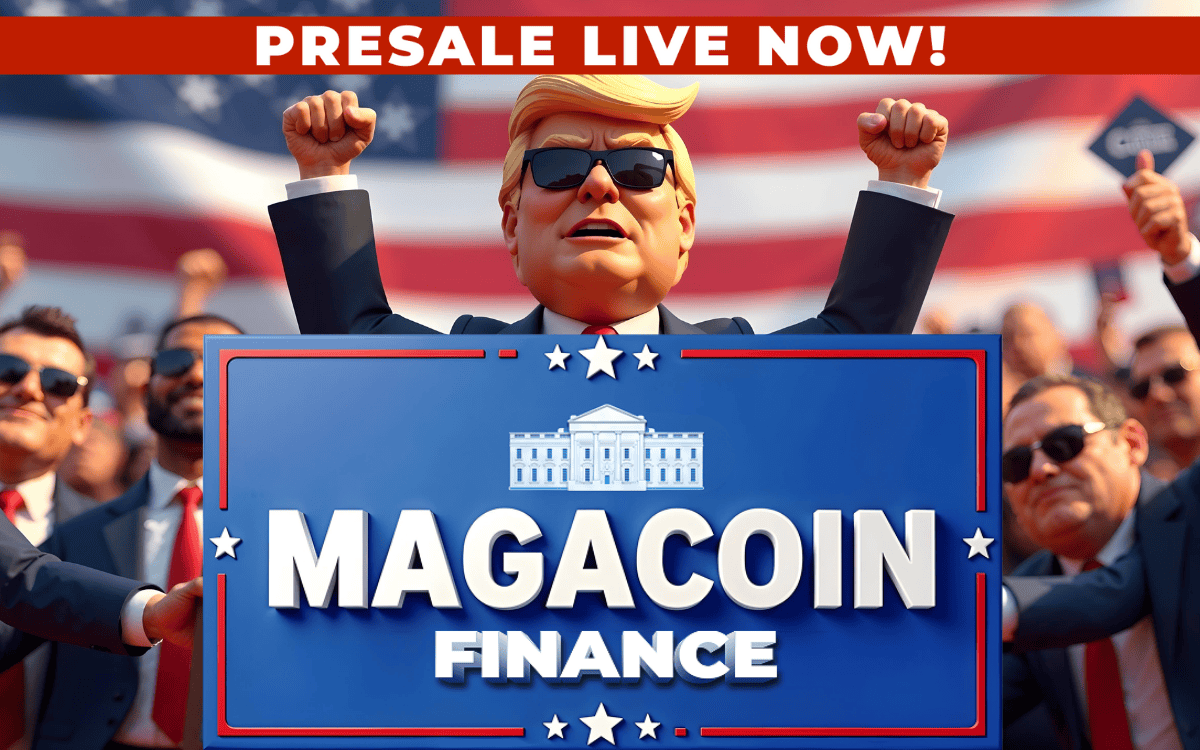 CaryptosHeadlines Media Has Launched Its Native Token CHT.
Airdrop Is Live For Everyone, Claim Instant 5000 CHT Tokens Worth Of $50 USDT.
Join the Airdrop at the official website,
CryptosHeadlinesToken.com
CaryptosHeadlines Media Has Launched Its Native Token CHT.
Airdrop Is Live For Everyone, Claim Instant 5000 CHT Tokens Worth Of $50 USDT.
Join the Airdrop at the official website,
CryptosHeadlinesToken.com
- April 2 Trump tariffs risk a market crash, hitting stocks and crypto.
- Crypto markets are bleeding, with major sell-offs across the board.
- Trade wars threaten crypto growth with stricter regulations.
Donald Trump tariffs that imminent “Liberation Day” announcement on April 2 is causing shockwaves in global markets, with talk of a devastating crash hanging over both traditional stocks and cryptoassets. The past two days have seen the market respond negatively, with widespread sell-offs growing.
Trump Tariffs That Would Rock Global Markets
Trump tariffs represent a dramatic departure from the cooperative international trade order of recent decades. His proposal aims at the so-called “Dirty 15” a cluster of important U.S. trading partners that collectively represent 80% of the nation’s trade volume.
These Trump tariffs, if imposed, would unleash broad economic fragmentation, compelling nations to reorient their trade policies away from the U.S.
Experts such as Heidi Crebo-Rediker, a senior fellow at the Council on Foreign Relations, caution that such unilateral trade policies have the potential to cause catastrophic disruptions in capital flows, regulatory systems, and international investments.
Markets are already preparing for the worst, with investors exiting risk assets in expectation of increased volatility.
Crypto’s Cross-Border Nature at Risk
Cryptocurrencies flourish in an open, interconnected world. The growth of the industry has depended on a worldwide coordinated regulatory framework, openness to cross-border capital flows, and investor belief in a borderless digital economy. Any push toward economic protectionism imperils these very foundations.
With nations such as Canada and the European Union set to make a break from the U.S., the likelihood of disparate crypto regulations increases. The absence of coordination among the world’s leading economies could result in non-uniform policy regulation, tighter capital controls, and higher hurdles for crypto adoption.
Market Reaction:
While the stock market staggers and most altcoins suffer, Bitcoin, Ethereum, and XRP have held firm. BTC continues to prove its status as “digital gold” – a haven during economic uncertainty.
ETH, with its strong penetration into decentralized finance (DeFi), has also shown strength. Meanwhile, XRP’s recent price stability may be attributed to continued institutional interest and legal certainty regarding its status.

On the other hand, most of the smaller altcoins have been hammered, with investors abandoning high-risk investments. The dominance of Ethereum and Bitcoin is increasing as investors seek refuge in more stable cryptocurrencies.

Long-Term Implications for Crypto
Trump’s acceptance of stablecoins and digital finance has been welcomed by crypto proponents, but the wider implications of his trade war approach may be bad news for the industry. If the U.S. disengages from multilateral economic cooperation, its ability to shape digital asset regulations may decline, opening the door for other international players – notably China – to make the rules.
Certain crypto bulls, such as Michael Saylor, have envisioned Bitcoin hitting a $200 trillion market cap someday. But if the coordination of global economics weakens, crypto’s next adoption wave might experience considerable headwinds. Worst case, Bitcoin will have a tough time sustaining even a $1 trillion market cap.
April 2 Trump tariffs can be a watershed moment for international markets, taking them into greater uncertainty. Bitcoin, Ethereum, and XRP have been holding up so far, but the wider crypto market is in dire straits if economic fragmentation takes hold.
For the time being, the wisest thing that investors can do is to keep their fingers on the pulse of events, prudently manage risk, and observe how global trade plays out over the next few weeks. If things get really bad, we will remember this time as a turning point for conventional and digital finance.
Highlighted Crypto News Today
Can XRP Rebound to $2.30 or Face a Further Fall Below $2.00?












